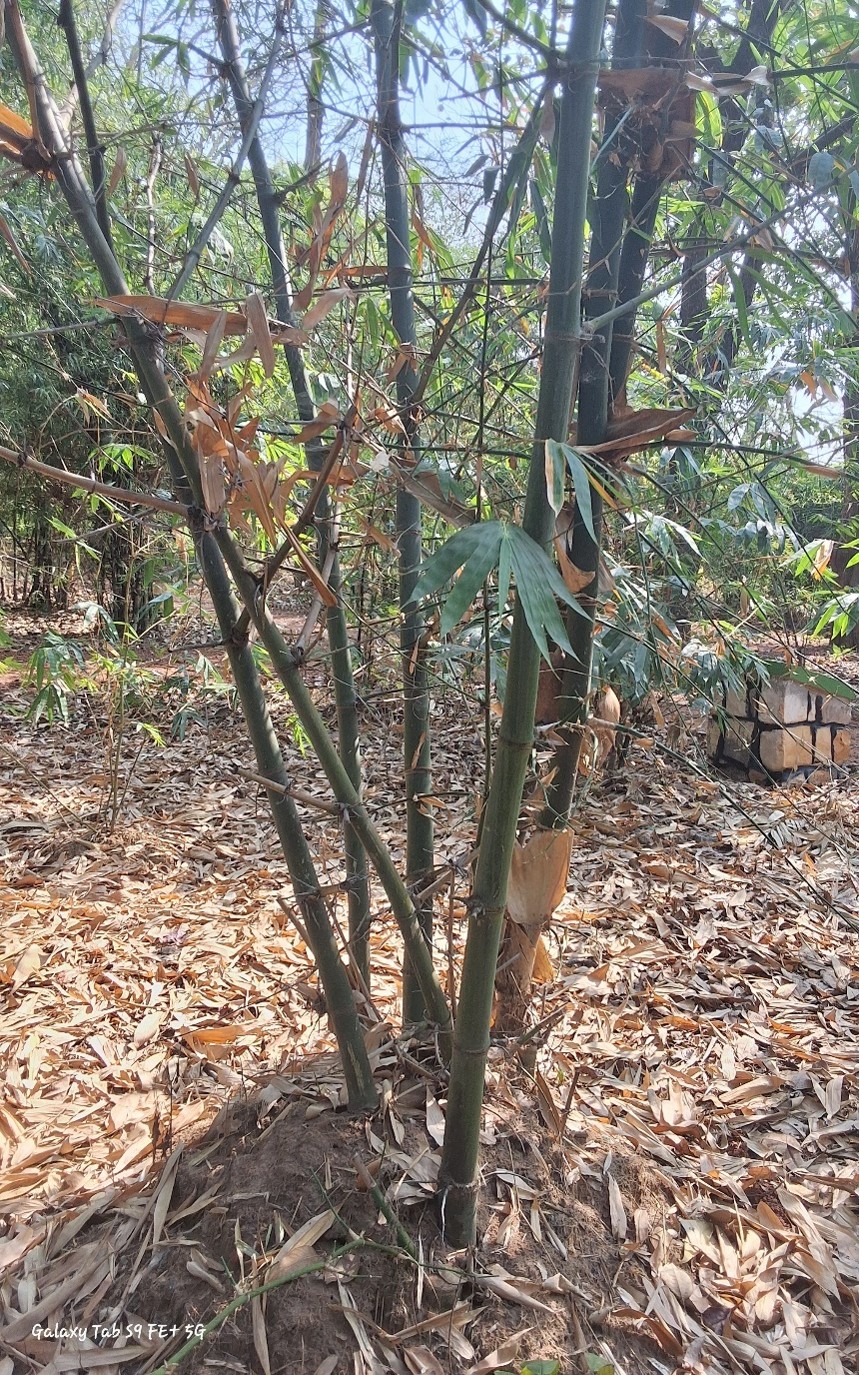Dendrocalamus brandisii

Dendrocalamus brandisii
Dendrocalamus brandisii also known as Brandis's Bamboo or Brandis Bamboo, is a tall and robust clumping bamboo species found primarily in tropical and subtropical regions. The culms can reach a height of 18 to 30 meters and a diameter of 15 to 20 cm. The culms are green when young, turning light brown or yellowish with age, and have an internode length of 30 to 50 cm. The culm sheaths are green when young and turn brownish as they mature. The adaxial surface of the sheath is smooth and glabrous, while the abaxial surface is slightly hairy, with ciliate margins.
Dendrocalamus brandisii prefers well-drained, fertile soils, such as loamy and clayey soils, and thrives at altitudes ranging from 200 to 1,500 meters. It is found in tropical and subtropical forests, typically in moist regions. Native to India, Myanmar, Thailand, and parts of Southeast Asia, it has also been introduced to some other tropical regions for ornamental and practical purposes.
The leaves of Dendrocalamus brandisii are lanceolate, with pointed tips, and range in length from 20 to 40 cm and breadth from 3 to 5 cm. The inflorescence consists of large panicles that branch out with spikelets. The empty glumes are small, ovate to lanceolate with acute tips, while the flowering glumes are larger with smooth or slightly hairy edges. The stamens are exserted, with glabrous anthers and a hairy style. Flowering is infrequent, occurring once every 30 to 50 years in large bamboo groves, and has been recorded in parts of India and Southeast Asia, though it typically happens in large patches of this species.
Dendrocalamus brandisii produces seeds rarely, as flowering is infrequent and seed viability is low. It is primarily propagated through vegetative methods such as culm cuttings, clump division, offsets, and tissue culture.
This bamboo is highly valued for its strength and size, making it ideal for large-scale construction projects, including buildings, bridges, and scaffolding. The culms are also used to create furniture, household items, and various handicrafts. Due to its long fibers, Dendrocalamus brandisii is an excellent material for the pulp and paper industry. The tender shoots of this species are edible and commonly consumed in parts of Southeast Asia. Additionally, its dense wood is used as fuel in rural areas due to its high energy value. With its dense root system, Dendrocalamus brandisii is also effective in soil erosion control, stabilizing soil in vulnerable areas.
Listen Audio:
Need assistance? BRTC Faculty